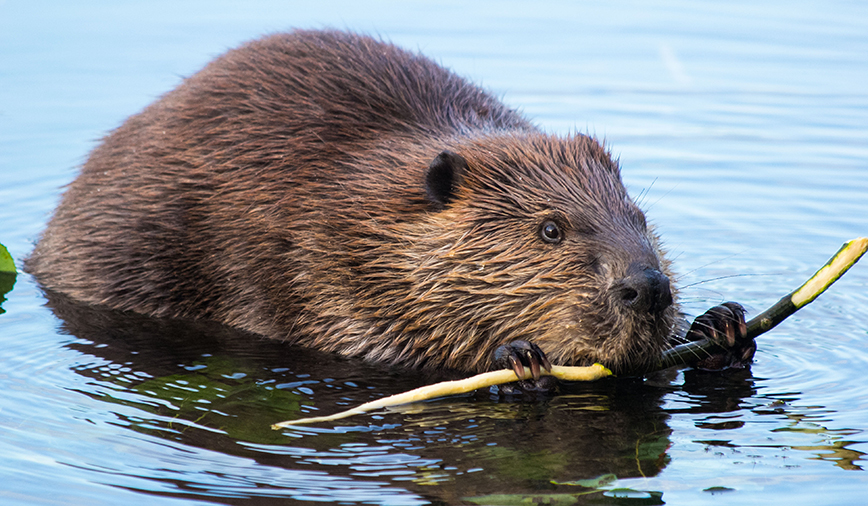October 25, 2013
Beavers
When it comes to conversation, and newspaper columns, certain topics are bound to cause a stir. Religion is one; politics is another. And then there are rodents.
These furry, gnawing critters, famous for their ever-growing incisors and often impressive reproductive rates, never fail to provoke a response. Folks either say “Yay!” or a very strong “Nay!”
Knowing this, and knowing the sorts of feedback past columns on chipmunks and mice have generated, I’m nonetheless putting this topic up for discussion again. Yep, I’m going out on a limb, so to speak, and tackling the topic of our largest North American rodent, the beaver.
If you happen to live near water, whether it’s the Fox River, a tributary or a neighborhood pond, you’ve probably had dealings with these industrious mammals. Maybe they’ve discovered you have excellent “taste” in landscaping. Or perhaps they’ve toppled a tree in your yard, leaving a gnawed, pointy stump as their calling card.
Even if you don’t live by beaver habitat, you can certainly spot evidence of their presence. Take a walk along the river and it won’t be long before you see bare sticks floating in the water – a sign that Castor canadensis has been snacking nearby. Contrary to popular belief, beavers don’t eat wood. It’s the tree’s nutritious inner bark that they’re after. The stripped sticks that are left behind are like the cobs that remain after you eat an ear of corn.
Right now beaver activity is at a peak. Because they don’t hibernate, beavers need to store up enough food to make it through the winter months. Shrubs, saplings and small trees make up the bulk of the harvest. Cut into manageable lengths, they’re then toted and floated back home to be stored in food caches — pantries, if you will — next to the
underwater entrance of the beaver’s lodge or bank den.
Over time, these branch buffets can grow to an impressive size — sometimes as tall as 6 feet — and include a wide variety woody plant species. Local favorites include river birch, maple, alder and, as one homeowner told me, “anything that costs more than $100 to replace.”
Wildlife biologists have noted that beavers tend to place favored food items lower in the cache, then top off the structure with species less preferred—the beaver equivalent of planning to eat dessert first. But this top layer also serves an important function. Extending above the water’s surface, its protruding branches catch falling snow and create an insulating layer that helps keep water from freezing in and around the food; meanwhile, down below, cold water keeps the stored branches edible until spring returns.
Chewed trees are the most obvious evidence that beavers are afoot. (Interesting side note: It’s really hard to find intact beaver footprints, because as the animal walks along its large, flat tail usually wipes them away.)
But if you happen to find yourself near a local body of water, you may be able to spot some of the more obscure indications that beavers are about.
One sign is bank dens. Fox River beavers do not typically build dams nor live in lodges built of sticks and mud; instead, they excavate dens in the river’s banks. Look for large piles of gnawed sticks at the water’s edge; a den entrance usually lies below.
Scent mounds are another indication of beaver presence in an area. They are more common in spring than fall, but are cool nonetheless. Beavers use their scent glands, or castor sacs, to mark territories. A beaver will make a small mound of mud and twigs, then anoint it with castoreum. If you spot one, sniff it. It’s a smell that’s hard to describe but, believe it or not, is not unpleasant.
In my book, traits like these catapult Castor canadensis beyond the category of just ordinary rodents, into the realm of extraordinary. But I’d like to know how you vote when it comes to beavers. Are you a Yay, or a Nay?
Pam Otto is the manager of nature programs and interpretive services at the Hickory Knolls Discovery Center, a facility of the St. Charles Park District. She can be reached at 630-513-4346 or potto@stcparks.org.

